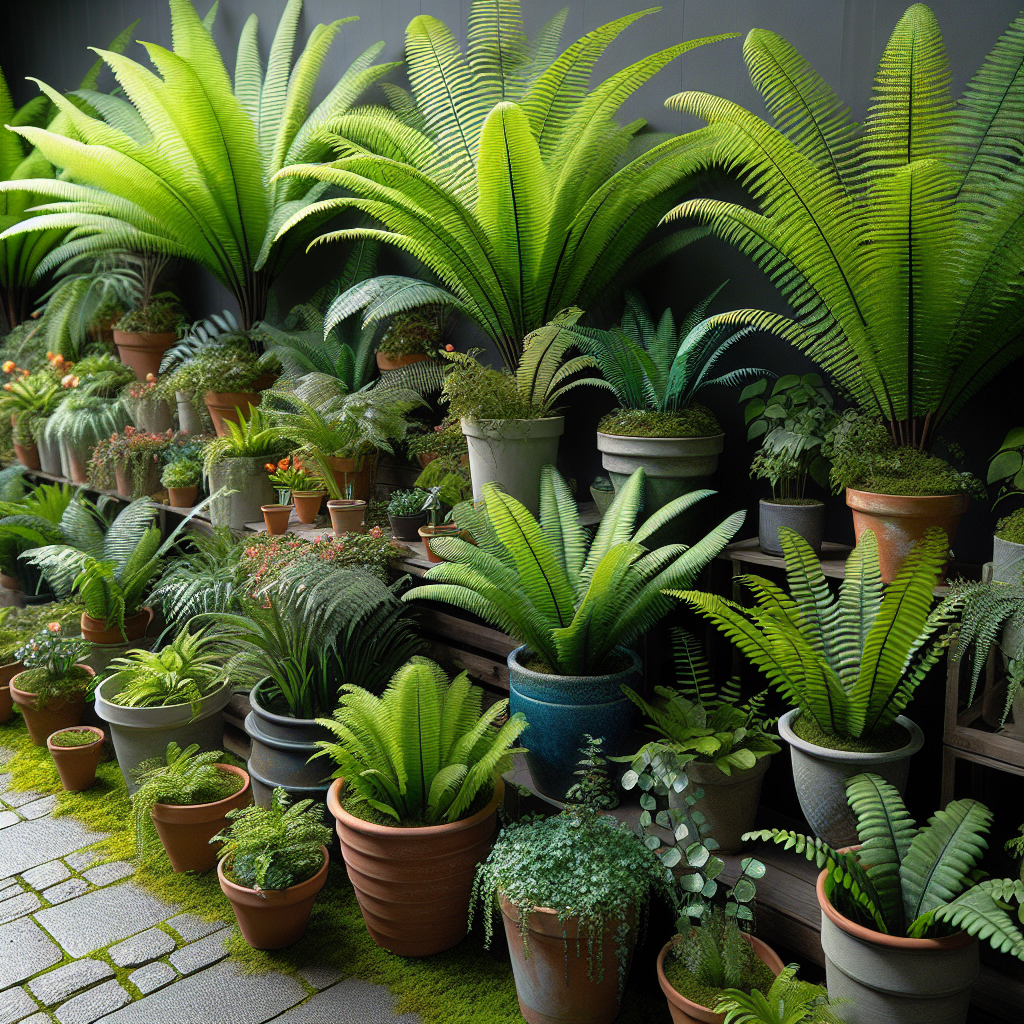Container gardening is a wonderful way to bring the beauty of nature into small spaces such as balconies, patios, and even indoors. One popular plant option for container gardening is ferns. Growing lush ferns in pots can add a touch of elegance and tranquility to any outdoor or indoor space. With the right care and attention, you can create a lush oasis filled with greenery that will thrive throughout the year.
Ferns are known for their delicate foliage and ability to thrive in low light conditions, making them an ideal choice for container gardening. Whether you are an experienced gardener or a beginner looking to try your hand at growing plants in pots, this guide will provide you with all the information you need to successfully grow lush ferns in containers. From choosing the right potting soil to proper watering techniques, this article will cover everything you need to know to create a beautiful fern-filled sanctuary in your home. So grab your gardening gloves and let’s get started!
**Choosing the Right Container**
When it comes to growing ferns in pots, choosing the right container is key to their success. Opt for a pot that has drainage holes at the bottom to allow excess water to escape, preventing root rot. Ferns prefer slightly acidic soil that is well-draining, so selecting a pot with good drainage is essential.
Additionally, consider the size of the pot when choosing one for your ferns. While it may be tempting to choose a smaller pot for aesthetic reasons, keep in mind that ferns have shallow root systems and prefer wide containers rather than deep ones. A wider pot will allow room for the roots to spread out and help prevent waterlogged soil.
**Selecting the Right Potting Mix**
The next step in growing lush ferns in pots is selecting the right potting mix. Ferns thrive in rich, well-draining soil that holds moisture without becoming waterlogged. A good quality peat-based potting mix with added perlite or sand for drainage is ideal for growing healthy ferns.
Avoid using regular garden soil or compost in your container as they may contain pests or diseases that could harm your plants. Look for a specialized mix formulated specifically for indoor plants or ferns to ensure your plants receive all the nutrients they need to thrive.
**Planting Your Ferns**
Once you have chosen the right container and potting mix, it’s time to plant your ferns. Start by filling your container with a layer of potting mix, leaving enough room at the top for your plant’s roots. Gently remove your fern from its nursery pot and loosen the roots before placing it into the new container.
Add more potting mix around the roots until they are covered, being sure not to bury the crown of the plant too deeply. Water your newly planted fern thoroughly until water drains out of the bottom of the container, ensuring that all parts of the rootball are moistened.
**Caring for Your Ferns**
Proper care is essential for growing lush ferns in pots. Ferns prefer indirect light and thrive in humidity levels between 40-50%. To increase humidity around your plants, mist them regularly with water or place a humidifier nearby.
Watering is also crucial for keeping your ferns healthy and vibrant. Allow the top inch of soil to dry out before watering thoroughly until water drains from the bottom of the container. Avoid overwatering as this can lead to root rot and other problems.
Fertilize your ferns every 4-6 weeks during their growing season (spring through fall) with a balanced liquid fertilizer diluted at half strength. This will provide them with essential nutrients needed for healthy growth without risking fertilizer burn.
**Common Issues with Growing Ferns in Pots**
Despite their resilience, ferns can still face common issues when grown in containers. One common problem is brown tips on leaves, which can indicate either underwatering or low humidity levels. Increase humidity around your plants by misting them regularly or placing them on trays filled with pebbles and water.
Yellowing leaves may be a sign of overwatering or nutrient deficiencies such as nitrogen or iron deficiency. Adjust your watering schedule accordingly and consider fertilizing more frequently if necessary.
If you notice pests such as spider mites or aphids on your plants, remove them by spraying them off with water or using insecticidal soap according to package instructions.
**FAQ:**
1) Can I grow different types of ferns together in one container?
– Yes! Mixing different varieties of ferns can create an interesting display in one container as long as their care requirements are similar.
2) How often should I repot my fern?
– Repotting every 1-2 years is recommended as they outgrow their containers.
3) Can I keep my potted fern outdoors during winter?
– It depends on where you live; some varieties can withstand colder temperatures while others may need protection indoors.
4) Should I prune my potted fern?
– Yes! Regular pruning helps maintain its shape and encourages new growth.
5) Can I use tap water on my potted Fern?
– It’s best not; tap water often contains chemicals like chlorine that could harm your plant over time; use filtered water instead.
In conclusion: Growing lush ferns in pots can be a rewarding experience that brings life and beauty into small spaces both indoors and outdoors alike., By following these simple steps outlined above from choosing The Right Container To Caring For Your Plant You Will Be Able To Make It Full Potential And Enjoy All Year-round . Remember Let Them Feel At Home They’ll Make Yours Touch The Sky !














